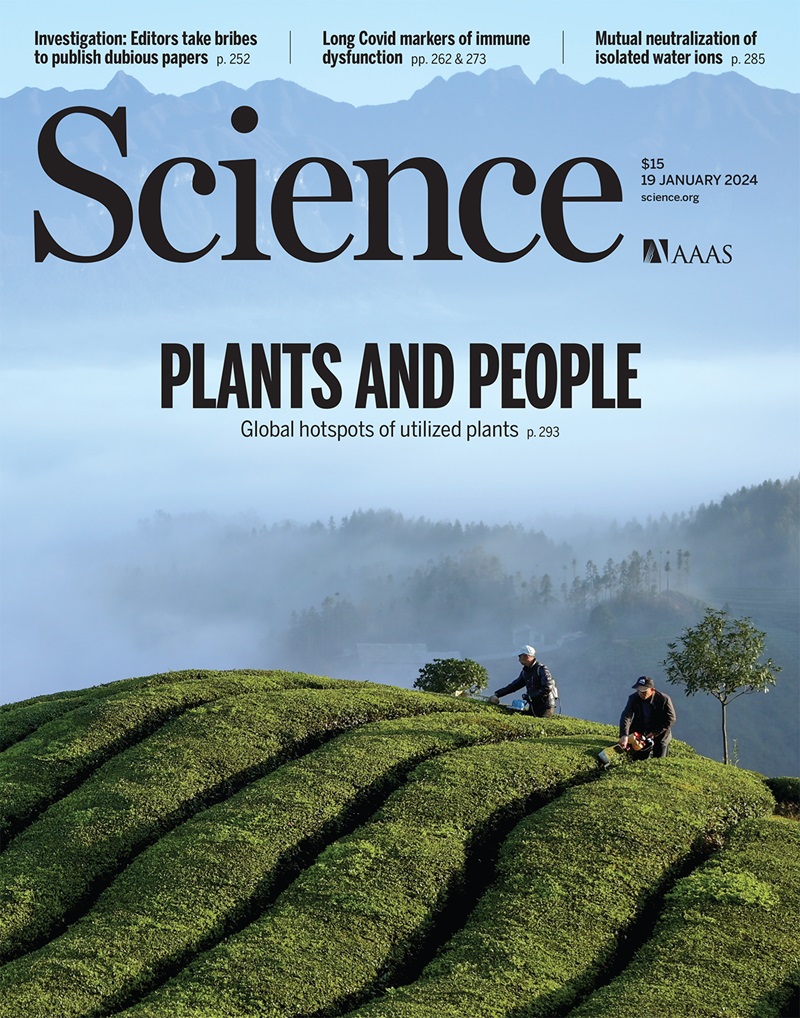Global glacier change in the 21st century: Every increase in temperature matters
IF 45.8
1区 综合性期刊
Q1 MULTIDISCIPLINARY SCIENCES
引用次数: 42
Abstract
Glacier mass loss affects sea level rise, water resources, and natural hazards. We present global glacier projections, excluding the ice sheets, for shared socioeconomic pathways calibrated with data for each glacier. Glaciers are projected to lose 26 ± 6% (+1.5°C) to 41 ± 11% (+4°C) of their mass by 2100, relative to 2015, for global temperature change scenarios. This corresponds to 90 ± 26 to 154 ± 44 millimeters sea level equivalent and will cause 49 ± 9 to 83 ± 7% of glaciers to disappear. Mass loss is linearly related to temperature increase and thus reductions in temperature increase reduce mass loss. Based on climate pledges from the Conference of the Parties (COP26), global mean temperature is projected to increase by +2.7°C, which would lead to a sea level contribution of 115 ± 40 millimeters and cause widespread deglaciation in most mid-latitude regions by 2100.
21 世纪全球冰川的变化:温度的每一次上升都很重要
冰川质量损失会影响海平面上升、水资源和自然灾害。我们针对共同的社会经济路径,对全球冰川(不包括冰原)进行了预测,并对每个冰川的数据进行了校准。根据全球温度变化情景预测,到 2100 年,冰川的质量将比 2015 年减少 26 ± 6% (+1.5°C) 到 41 ± 11% (+4°C)。这相当于 90 ± 26 到 154 ± 44 毫米的海平面当量,并将导致 49 ± 9 到 83 ± 7% 的冰川消失。质量损失与气温上升呈线性关系,因此气温上升的降低会减少质量损失。根据缔约方大会(COP26)的气候承诺,到 2100 年,全球平均气温预计将上升 +2.7°C,这将导致海平面上升 115 ± 40 毫米,并造成大多数中纬度地区的大面积冰川退化。
本文章由计算机程序翻译,如有差异,请以英文原文为准。
求助全文
约1分钟内获得全文
求助全文
来源期刊

Science
综合性期刊-综合性期刊
CiteScore
61.10
自引率
0.90%
发文量
0
审稿时长
2.1 months
期刊介绍:
Science is a leading outlet for scientific news, commentary, and cutting-edge research. Through its print and online incarnations, Science reaches an estimated worldwide readership of more than one million. Science’s authorship is global too, and its articles consistently rank among the world's most cited research.
Science serves as a forum for discussion of important issues related to the advancement of science by publishing material on which a consensus has been reached as well as including the presentation of minority or conflicting points of view. Accordingly, all articles published in Science—including editorials, news and comment, and book reviews—are signed and reflect the individual views of the authors and not official points of view adopted by AAAS or the institutions with which the authors are affiliated.
Science seeks to publish those papers that are most influential in their fields or across fields and that will significantly advance scientific understanding. Selected papers should present novel and broadly important data, syntheses, or concepts. They should merit recognition by the wider scientific community and general public provided by publication in Science, beyond that provided by specialty journals. Science welcomes submissions from all fields of science and from any source. The editors are committed to the prompt evaluation and publication of submitted papers while upholding high standards that support reproducibility of published research. Science is published weekly; selected papers are published online ahead of print.
 求助内容:
求助内容: 应助结果提醒方式:
应助结果提醒方式:


